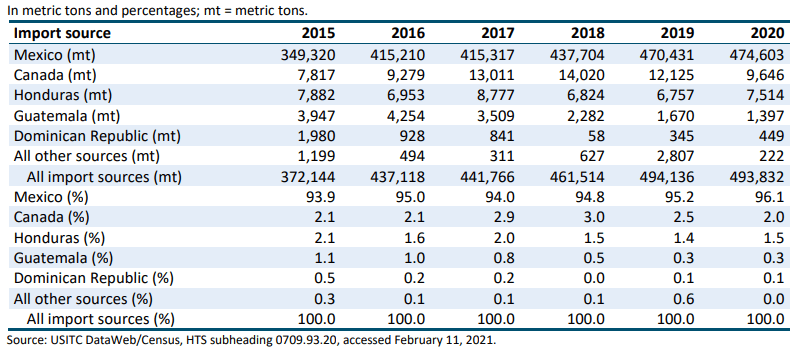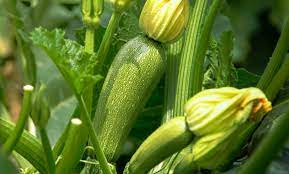Mexico led squash exports in the world during 2020, with shipments of 551 million dollars.
After Mexico came Spain (502 million dollars), the United States (67 million) and the Netherlands (63 million).
Recently, the United States International Trade Commission (USITC) conducted an analysis to assess whether squash imports into the United States represent serious injury or a threat of serious injury to the industry in that country.
“Fresh or chilled squash” includes squash intended for fresh consumption (“fresh market”).
Squash: US imports for consumption, by source, 2015–20
cuadro calabazaWithin the squash category, there are two main types: summer squash and winter squash.
Contrary to their names, the two varieties are not strictly grown or harvested in a particular season, and some regions may produce both simultaneously.
Both summer and winter squash are warm-season crops, but summer squash is generally harvested before full maturity (approximately 40 to 50 days after planting), while winter squashes are harvested when they are ripe. fully mature (approximately 80 to 120 days after sowing).
Squash exports
The USITC’s analysis focuses primarily on fresh summer squash because it is the primary variety produced in the southeastern United States and competing imports from Mexico are also summer squash.
From January to November 2021, pumpkin exports from Mexico to the US market were 317 million dollars, compared to shipments of 414 million dollars in the same period of the previous year, according to USITC data.
Summer squashes are smaller, have a thin, edible skin, and are typically eaten while the fruit is immature, before the skin and seeds begin to harden.
Due to its fragile nature, summer squash are intended for the market as quickly as possible after harvest.
Also, the window between picking and consumption is usually two weeks; however, to maintain maximum freshness it is recommended that they be stored in a refrigerator for no more than three to four days at 45 degrees to 50 degrees Fahrenheit and 85 to 90% humidity.
Summer squash varieties include zucchini, yellow, crookneck, and scallop.
In contrast, winter squash has a thick, hard rind, which allows it to be stored for several months.
Winter squash varieties include acorn, spaghetti, butternut, and hubbard.
A limited amount of squash is sold to food processing companies. This is primarily winter squash and may be used as an ingredient in processed food (e.g., butternut squash soup) or cut or diced (e.g., zucchini squash “noodles” or fresh, cubed squash).
In totality, winter squash is the smaller of the two markets.
![]()

